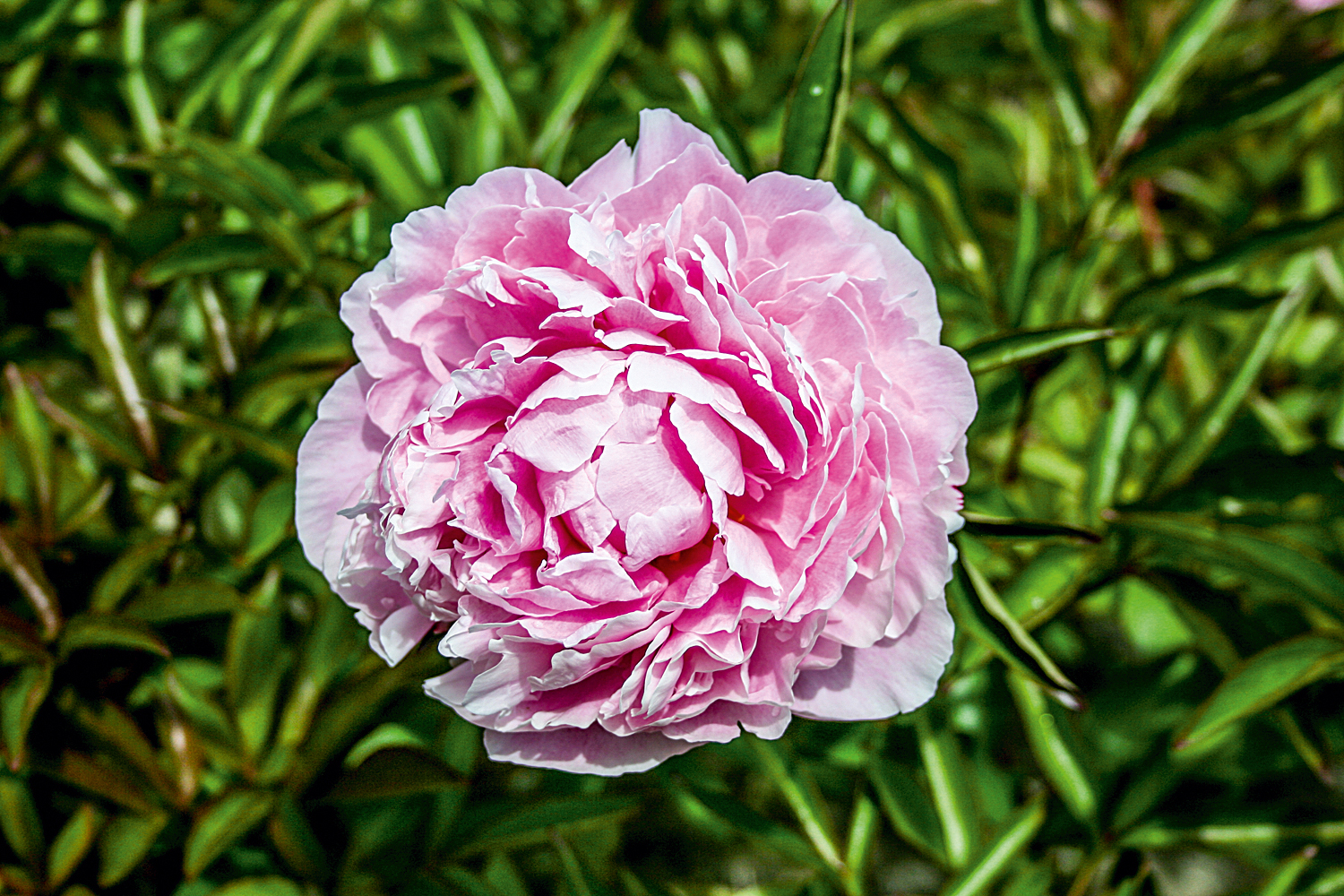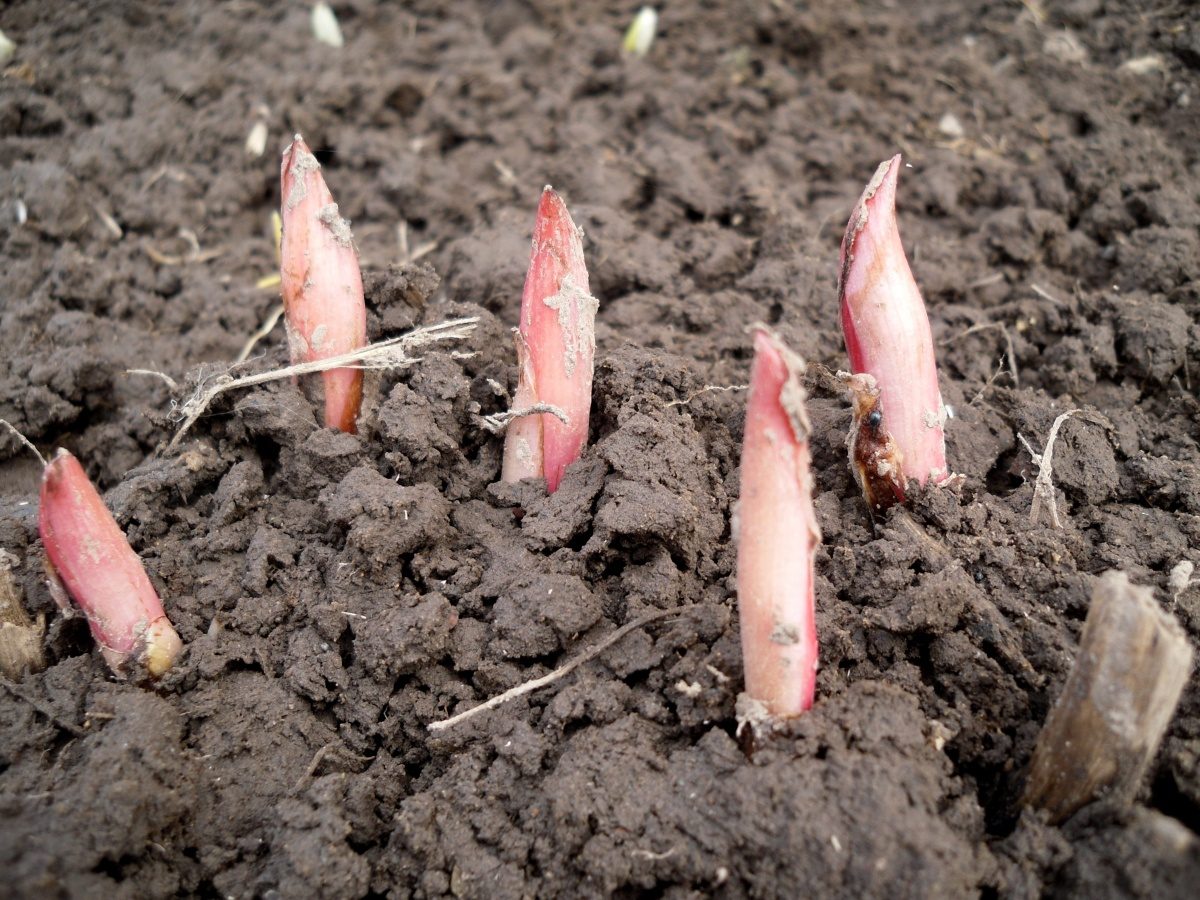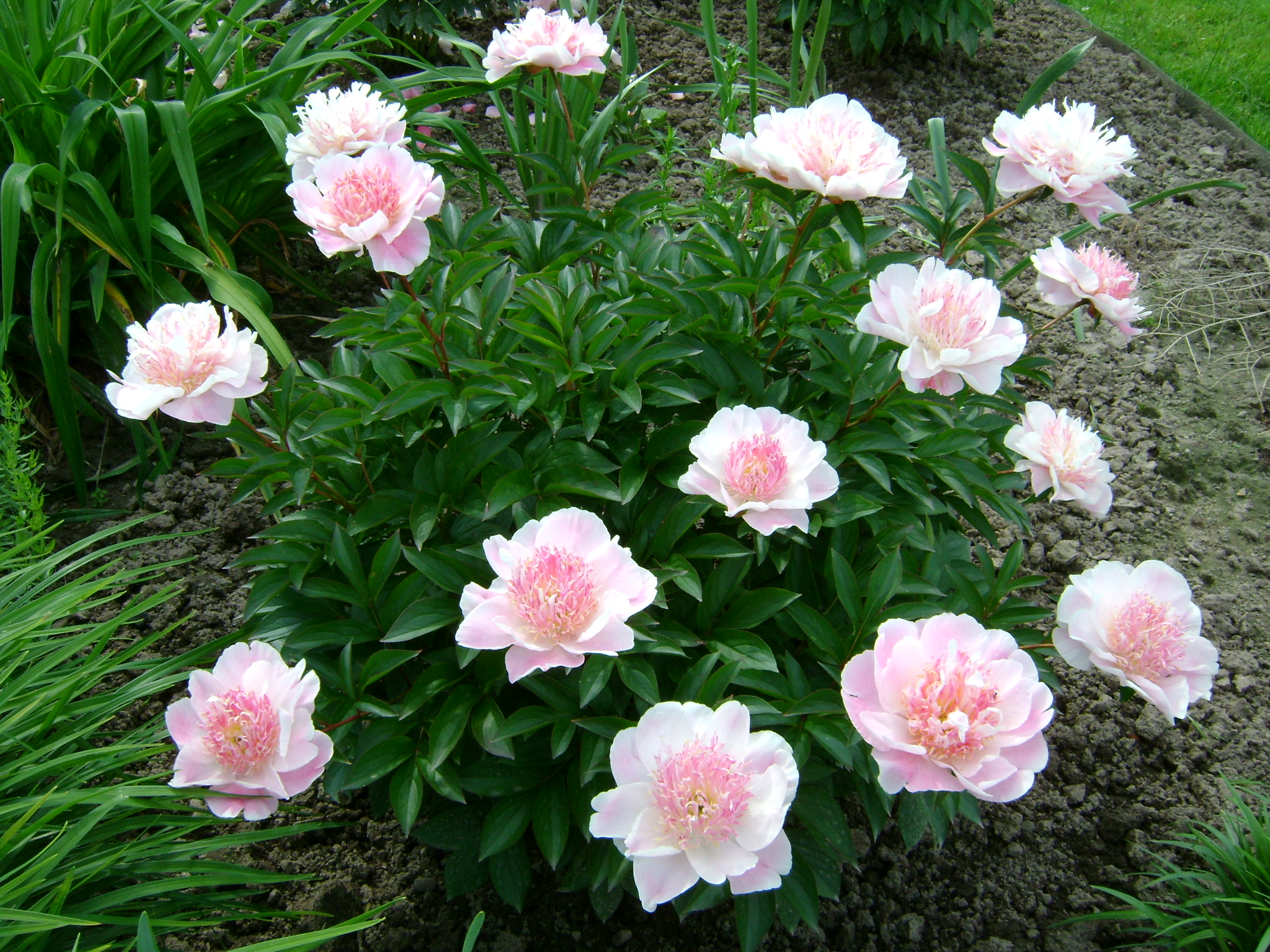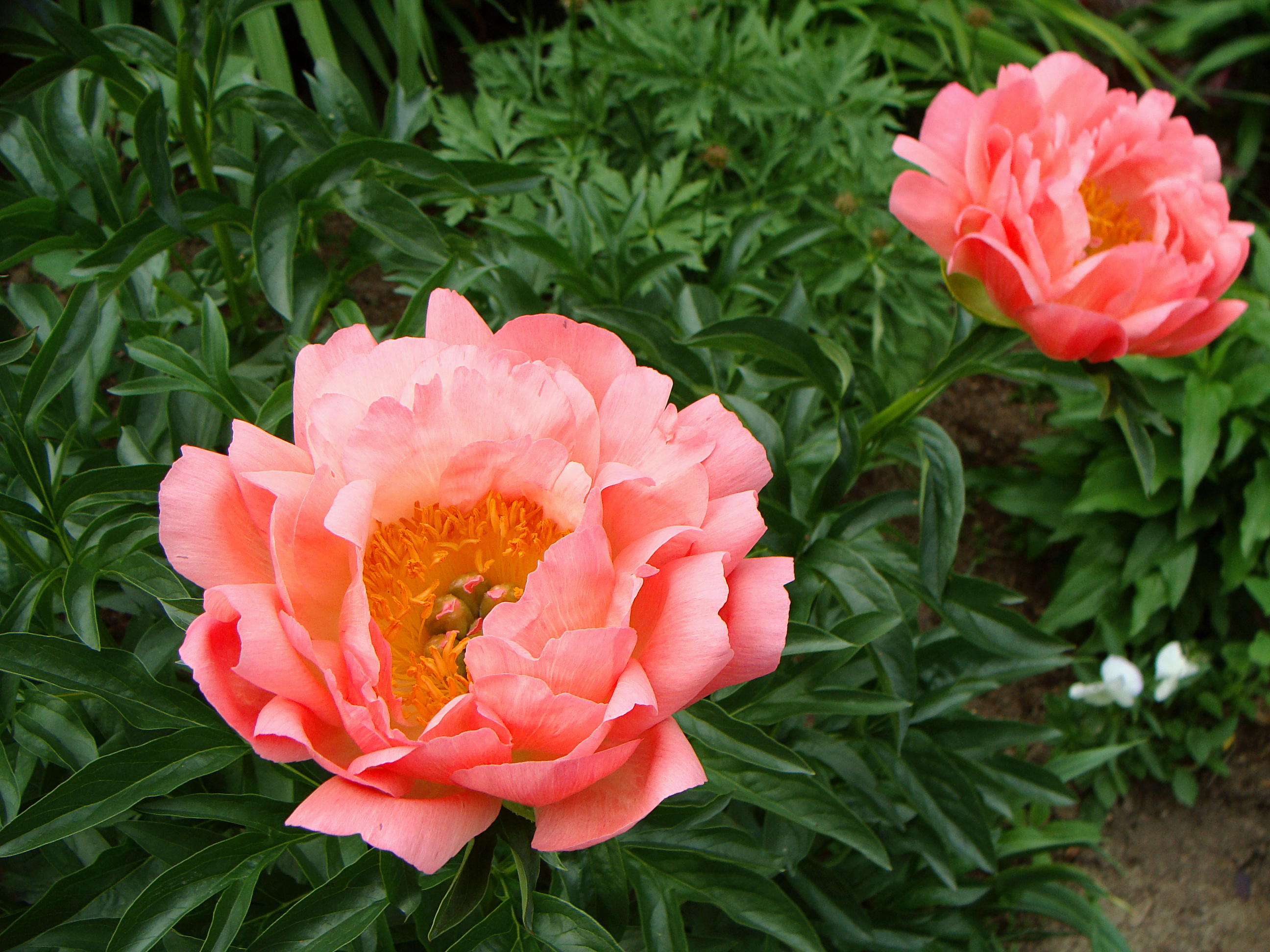Spreading milky-flowered peony with a hat of flowers will decorate any garden. Peonies have been grown in culture for many centuries, and today many varieties of this beautiful plant have been bred.
Material Content:
Description of varieties of milk peony
Varieties of milk flowering peony, suitable for cultivation in the middle lane, are very diverse. Among them, it is worth highlighting the most beautiful, beloved by our gardeners.
"Francoise Ortegat" has been grown since 1850. In France, he was introduced as a heirloom. The variety is really magnificent - up to a meter high, with terry hemispherical inflorescences of dark red color. The size of one flower can reach 14 cm. If you make a brief description of the species, the variety is winter-hardy, blooms profusely and continuously, very unpretentious.
"Paul M Wayde" is distinguished by huge caps of scarlet flowers. The flowers look very voluminous and terry. The variety does not require garter, and that is why it is very popular among gardeners. In autumn, the bushes also look very decorative thanks to the crimson foliage. The plant retains an attractive appearance all season.
Pinkish-cream, very fluffy flowers blooms peony milky "Charm". Bushes can reach one and a half meters, half-double flowers.
Kansas is a very popular variety from China. Lush bushes are densely covered with raspberry buds. The variety is extremely undemanding and feels good even during drought.
Several luxurious flowers on one stem give varieties Lactiflora and Bernhardt. These plants are characterized by winter hardiness and flowering time. Pink or bright red flowers.Varieties have many hybrids, are resistant to gray rot, tolerate drought well.
Seed cultivation
Growing peonies from seeds is a very exciting process. If you already have these flowers on the site, then you need to leave about 6-7 flowers on the bush. When the fruits appear, they are harvested. Usually this moment comes at the end of August or at the beginning of September.
The seeds of the milky-flowered peony germinate very poorly due to the dense shell. Planting material, which is purchased in the package, is very difficult to germinate for this reason. If the shell of the seeds is wrinkled, then the chances that they will germinate are almost zero.
Growing milky-flowered peony seeds step by step:
- Seeds must be soaked for 48 hours in standing water. In water, you can add the stimulator "Epin" (2 drops).
- Before sowing, planting material is literally soaked for 2 minutes in a purple solution of manganese.
- Heat the sand to a pleasantly warm temperature in the oven and pour it into the container.
- Moisten the sand from the spray bottle and sow the seeds.
- Tighten the container with a film and keep at a temperature of +25 ° С during the day and +15 25 ° С at night.
- Spray sand daily from a spray bottle.
- As soon as real leaves appear on the sprouts, transplant peonies on separate flowerpots into fertile soil.
- The next three months, the plants should be kept in a warm and bright room until the leaves appear.
- In early August, young peonies planted in the garden.
Plants that were obtained from seeds develop very slowly. Such peonies will bloom only for 5-7 years.
Outdoor landing
Peonies are planted in late August or early autumn. Preparing a plot for grassy peonies should begin a few weeks before planting. The soil should be fertile, and the site is well lit by the sun. The selected site is dug up and at the same time, organic matter is embedded in the soil. You can use compost or humus. In no case should you close up manure, since peonies do not like it.
To make a good soil mixture for planting, the soil extracted from the planting hole is mixed with ripened compost, sand and peat, taken in equal proportions. You can supplement the soil mixture with mineral fertilizers, for example, phosphorus-potash. It is useful to add a handful of ash when planting.
Milky-flowered peony is very difficult for root injuries, so it should be planted with extreme caution. They dig a landing pit quite large - up to 70 cm wide and up to 60 cm in depth. If the site is moist or with a close occurrence of groundwater, it is imperative to arrange drainage with a layer of at least 20 cm.
The planting hole is filled with prepared soil mixture and a seedling is planted. The plant is gently lowered into the pit, straightened roots and covered with earth. The bush is slightly tamped and spilled liberally, and then mulched.
When planting grassy peonies, a distance of about a meter should be left between them. Such a large distance will allow the bushes to grow freely and not bend.
How to care for flowers
Caring for peonies in the open field is absolutely no difficulty and comes down to regular watering, loosening and mulching the soil, as well as to the fight against diseases and pests.
The milky-flowered peony does not like strong waterlogging. Due to excessive dampness, its roots can rot, then the plant will die. But a lack of moisture can lead to stunting and lack of flowering. Water the bushes sparingly, as the soil dries.
The day after watering, the soil is loosened, and at the same time, weed grass is also removed. It is advisable to mulch the bushes in hot regions so that the earth around the roots remains wet longer. In addition, mulching helps to reduce the work of care, because the mulch does not allow weeds to grow.
Three times a season bushes feed. The first time fertilizers are applied in May.You can feed with urea, spending 50 g of the drug in a bucket of water. The second time you can feed urea again at the very beginning of summer, before flowering. The last top dressing in the season is carried out after flowering. Microfertilizers are suitable.
When autumn comes, the entire aerial part of the bush should be cut. But many flower growers do not cut the foliage, especially if it is strong, but cover it with earth to protect the roots from freezing. Additionally, the roots are covered with a layer of wood ash. It is enough to scatter three or four handfuls around one bush.
Peony propagation methods
In addition to the seed method of propagation of milk-flowered peony, there is also a vegetative method - dividing the bush. The most favorable moment for the separation of the bush is mid-August. The age of the bush should exceed three years. There must be at least 10 stems on the bush.
The bush is dug up with a shovel, and then divided into dividers so that each has a green mass and well-developed rhizomes. Parts of the bush are immediately planted and necessarily shed abundantly.
Protection against diseases and pests
Most often, milky-flowered peonies are sick with gray rot. The stems begin to rot and all parts of the plant become moldy. Sick stems will have to be cut, and the flower treated with garlic solution, diluting 10 g in a bucket of water. They process not only a diseased bush, but also the soil around it. As a prophylaxis against gray rot, the bushes are sprayed with copper sulfate every spring.
Another dangerous disease is powdery mildew. The main symptom is the appearance of a whitish coating on the foliage. As a treatment, spraying with a copper-soap solution is used.
Of the insect pests, ants can annoy garden peonies during budding. Against these insects, treatment with the Iskra preparation is used.
Also, such a harmful insect as bronze can love peonies. Bugs should be collected manually, so as not to resort to chemical treatments once again.
A large colony on peonies can settle aphids. Insects feed on the juices of flowers and cause a thickening and deformation of the buds. Also, aphids are a carrier of diseases. Against pests, treatment with Karbofos and Actellik preparations is used.
Peonies are a real pearl of the garden. The petals of these amazing plants can be painted in a variety of shades, pleasing to the eye on a summer flower bed.


















